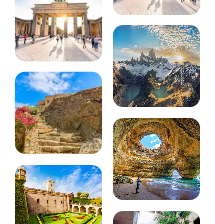12 free things to do and see in Rome
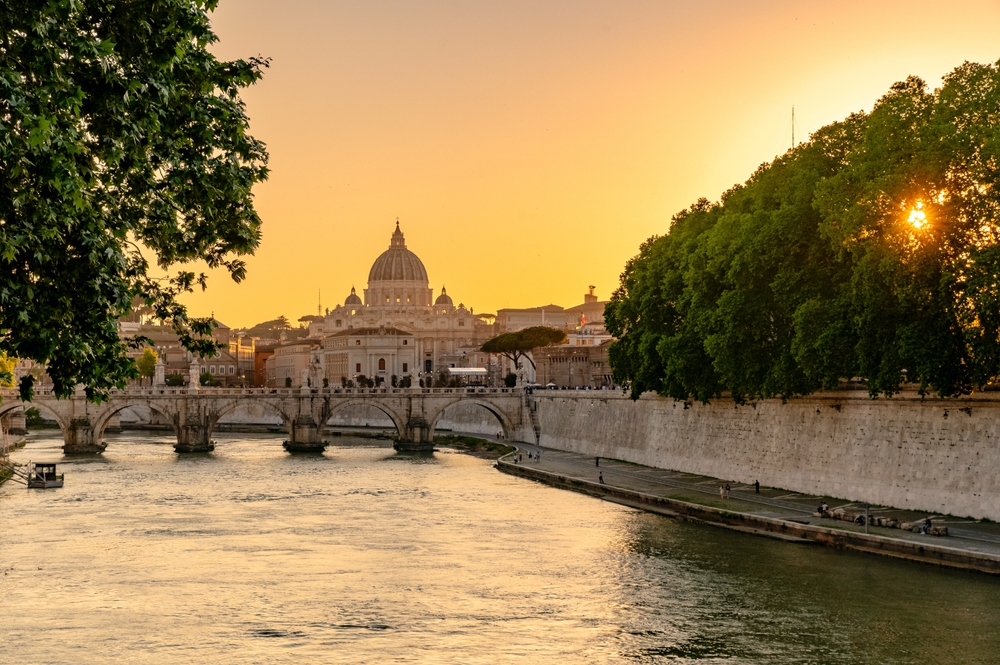
Rome, the Eternal City, fascinates visitors with its thousand-year-old monuments and exceptional heritage. But contrary to popular belief, the Italian capital offers a host offree visits andactivities in Rome that allow you to discover its treasures without spending a single euro. From majestic basilicas and Baroque fountains to iconic squares and breathtaking panoramas, here’s our selection of the 12 must-do free activities and tours for an authentic and affordable visit to Rome.
200 audioguided tours for cities all around the world
DownloadDownload the audio tour to discover Rome on foot and on your own
Discover the Italian capital with our audio tour of Rome, specially designed to guide you through the 23 most emblematic places of interest in the immortal city. This 6.4 km walk takes you from the Colosseum to the Vatican, passing through the city’s most beautiful squares and monuments, all accompanied by fascinating historical commentaries and captivating anecdotes.
Read also about the Rome guide:
- Top 14 culinary specialities in Rome
- Top 8 things to do in Rome
- St Peter’s Square in Rome, the Vatican’s most famous square
1. St Peter’s Basilica in the Vatican
It’s impossible to talk about free activities in Rome without mentioning the majestic St Peter’s Basilica. This architectural marvel, located in the heart of the Vatican, offers free access to all visitors who wish to admire its sumptuous interior. Designed by the greatest artists of the Renaissance, including Michelangelo and Bramante, the basilica is home to priceless treasures such as Michelangelo’s Pietà and Bernini’s baldachin. The dimensions of the building are impressive: 186 metres long and 46 metres high under the dome. Make sure you dress appropriately for the visit and expect to pass through security checks, but the wonder is well worth the effort.
2. The Trevi Fountain, a Baroque jewel
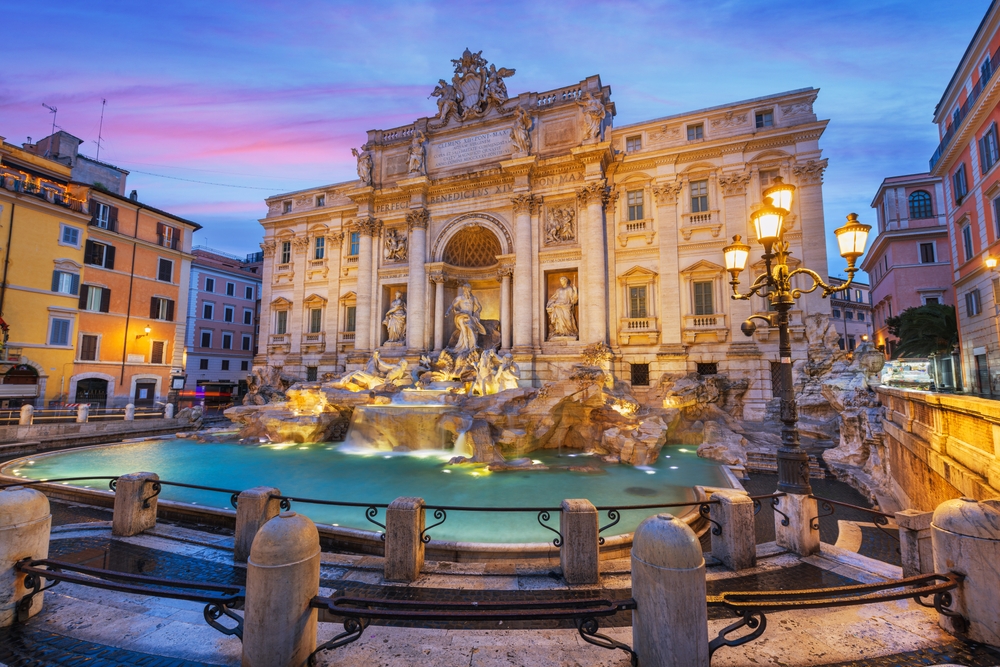
A romantic symbol of Rome, the Trevi Fountain is one of the Italian capital’s most popular free visits. This Baroque work of art from the 18th century, 26 metres high and 49 metres wide, features Neptune (known as “Ocean”) surrounded by sea horses and tritons. Tradition has it that people throw a coin with their right hand over their left shoulder, with their back to the fountain, to ensure that they return to Rome. Over €3,000 is raised every day and donated to charity. To avoid the crowds, it’s best to visit early in the morning or late in the evening, when the night-time lighting makes this masterpiece even more sublime.
3. The Pantheon, a preserved ancient temple
A true architectural feat of Roman antiquity, the Pantheon remains one of Rome’s best-preserved monuments and one of its most fascinating free visits. Built under the Emperor Hadrian in the 2nd century, this temple dedicated to all the gods impresses with its perfect dome measuring 43.3 metres in diameter, pierced at its centre by a 9-metre oculus. This opening is the only source of natural light and creates magical shadow effects inside. The Pantheon now houses the tombs of Raphael and the kings of Italy. Admission is free, so take the opportunity to admire the perfect proportions of this architectural masterpiece, which has inspired many buildings around the world.
4. Piazza Navona and its Baroque fountains
Built on the site of Domitian’s old stadium, Piazza Navona is one of the most beautiful Baroque squares in the world, and a must-see when it comes to free activities in Rome. This 240-metre-long oval square is home to three remarkable fountains: Bernini’s Fountain of the Four Rivers in the centre, representing the Nile, Ganges, Danube and Rio de la Plata, the Fountain of Neptune to the north and the Fountain del Moro to the south. The church of Santa Agnese in Agona, designed by Borromini, completes this sumptuous setting. The square is constantly alive with street artists, portrait painters and musicians, creating a unique atmosphere where art, history and everyday Roman life come together.
5. The exterior of the Colosseum, symbol of Rome
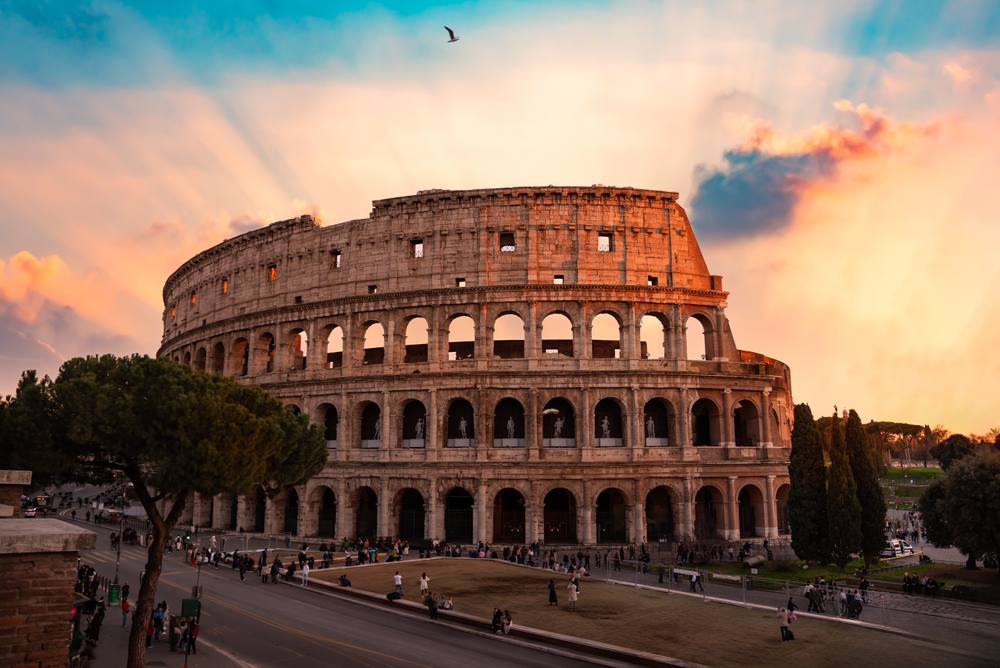
Although you have to pay to get inside the Colosseum, admiring the outside of this legendary amphitheatre is already an unforgettable experience, and it’s free. This 48-metre-high, 188-metre-long building, built between 70 and 80 AD, could accommodate up to 50,000 spectators who came to watch the gladiatorial combats and shows. Its four storeys of superimposed arcades are a perfect illustration of classical Roman architecture, with its Doric, Ionic and Corinthian orders. A complete tour of the amphitheatre reveals its different facades and the ingenuity of its construction. Don’t miss the nearbyArch of Constantine, erected in 315 to celebrate the emperor’s victory over Maxentius.
6. Capitoline Square and its museums
Designed by Michelangelo, Piazza del Campidoglio sits atop the smallest of Rome’s seven hills, offering one of the best free panoramic views of the Roman Forum. This harmonious square, bordered by three Renaissance palaces, is home to the equestrian statue of Marcus Aurelius (a copy, the original being kept in the Capitoline Museums). The monumental Cordonata staircase, designed by Michelangelo, leads up to this square, which has been symbolic of Roman political power since Antiquity. Although admission to the Capitoline Museums is subject to a fee, strolling around the square and admiring the architecture of its facades is entirely free. The panorama of the ancient ruins of the Forum from the rear terrace is a magnificent sight not to be missed.
7. The park of the Villa Borghese
Rome’s green lung, the Villa Borghese Park covers 80 hectares and is one of the capital’s most relaxing free activities. Created in the 17th century by the Borghese family, this English-style landscaped park offers a host of attractions: shady paths lined with umbrella pines, an artificial lake with boat hire, themed gardens and, above all, the Pincio terrace, which boasts one of the most beautiful views of Rome. The park is also home to a number of monuments and temples, including the Temple of Aesculapius on its islet in the middle of the lake. Families, joggers, cyclists and walkers rub shoulders in this green oasis where it’s good to escape the hustle and bustle of the city. Access to the park is free 24 hours a day, so you can enjoy it at any time, especially at sunset from the Pincio terrace.
8. The Trastevere district
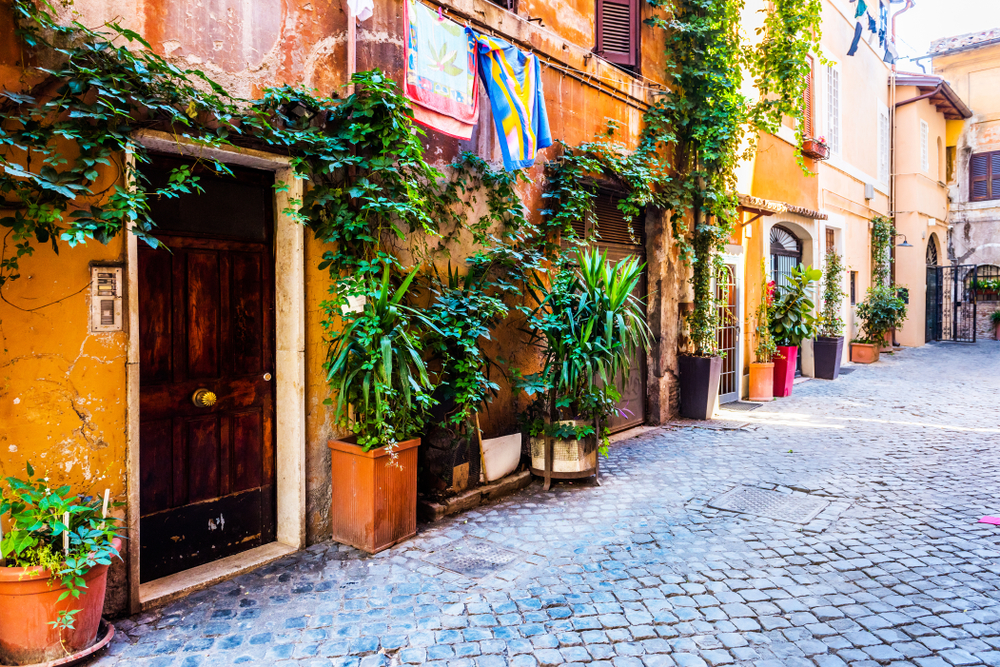
Crossing the Tiber to explore the bohemian district of Trastevere is one of the most authentic free activities in Rome. This picturesque district, whose name literally means “beyond the Tiber”, is full of cobbled streets, colourful facades adorned with ivy and lively little squares. The Basilica of Santa Maria in Trastevere, one of the oldest Christian churches in Rome, is well worth a visit for its magnificent medieval mosaics. The district comes alive particularly in the evening when the trattorias fill up and street musicians take over the squares. A stroll through Trastevere is a chance to discover a popular and friendly Rome, far removed from the traditional tourist routes, and to enjoy the unique atmosphere of a district that has remained authentic.
9. The stairs of the Place d’Espagne
Built in the 18th century to link the Piazza di Spagna to the Church of the Trinità dei Monti, the famous steps of the Piazza di Spagna are one of Rome’s most popular free gathering places. These 135 travertine steps, financed by France, are a magnificent example of Baroque architecture. At the foot of the steps, the Barcaccia fountain, the work of Pietro Bernini (father of the famous Gian Lorenzo), depicts a half-submerged boat in memory of a flood in the Tiber. The surrounding area, with its luxury boutiques in via del Condotti, aristocratic palaces and historic cafés, is perfect for a stroll. From the top of the stairs, the view over the square and the rooftops of Rome is worth the climb alone.
10. Campo de’ Fiori and its market
The only square in Rome without a church, Campo de’ Fiori (literally “Field of Flowers”) has been home to one of the capital’s most authentic and colourful markets since 1869. This free activity allows you to immerse yourself in everyday Roman life as you wander between the stalls of fruit, vegetables, spices and fresh flowers. At the centre of the square stands the statue of Giordano Bruno, the philosopher burnt here in 1600 for heresy, a reminder of the tumultuous history of this place. The market is held every morning except Sunday, transforming the square into a kaleidoscope of colours and flavours. The Renaissance architecture of the surrounding palaces, notably the Palazzo Pio Righetti, completes this typically Roman picture where tradition and modernity sit harmoniously side by side.
11. The Baths of Caracalla (exterior)
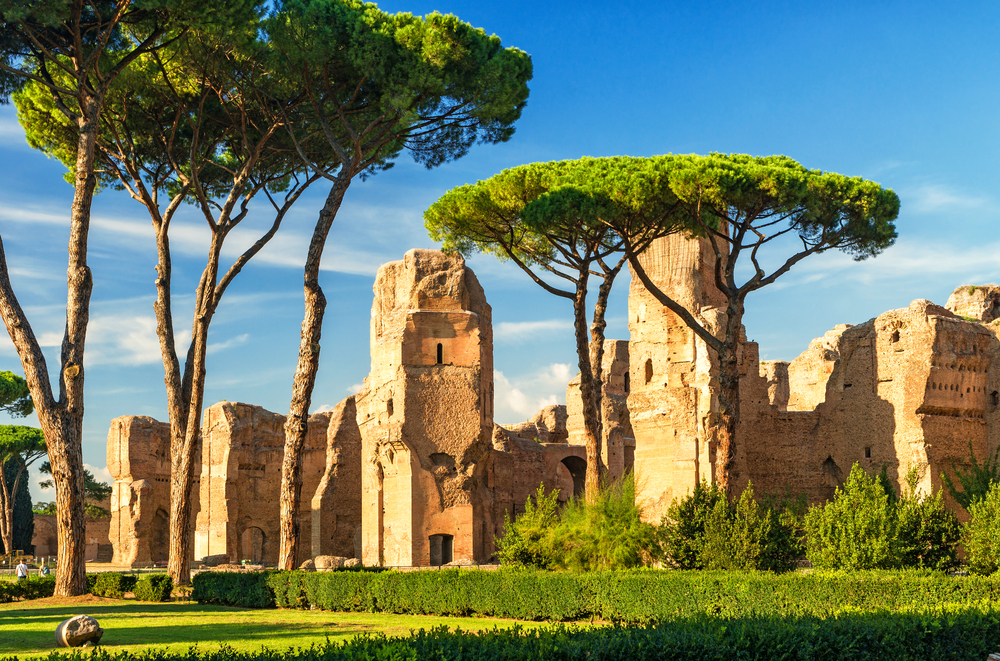
Although you have to pay to visit the interior, admiring the exterior of the Baths of Caracalla is a free way to appreciate the scale of this ancient thermal complex, one of the best preserved in the Roman Empire. Built between 212 and 216 AD under Emperor Caracalla, the baths could accommodate 1,600 bathers simultaneously in their various pools (caldarium, tepidarium, frigidarium). The imposing 38-metre-high red brick ruins bear witness to the grandeur of these facilities, which also included libraries, gymnasiums, gardens and shops. The site, a UNESCO World Heritage Site, is impressive for its size: 337 metres long and 328 metres wide. A walk around the perimeter will give you an idea of the past splendour of this place dedicated to Roman well-being and sociability.
12. Via Appia Antica
Nicknamed “the queen of roads” by the Romans, the Via Appia Antica offers an exceptional free escapade in the Roman countryside, just a few kilometres from the city centre. This ancient road, built in 312 BC to link Rome and Brindisi, still has several kilometres of its original volcanic stone paving. The route, ideal for walking or cycling, reveals numerous remains: ancient tombs, catacombs, aqueducts and villas. The centuries-old umbrella pines lining the route provide welcome shade and a unique romantic atmosphere. This walk through history gives you an insight into Roman road-building ingenuity, while enjoying the unspoilt natural surroundings. On Sundays, part of the road is closed to motor traffic, turning it into a paradise for cyclists, joggers and walkers in search of authenticity.
In conclusion, Rome demonstrates that it is perfectly possible to discover an exceptional city without breaking the bank. These 12 free activities and tours in Rome reveal the Eternal City’s extraordinary wealth of heritage, from ancient remains and Baroque masterpieces to authentic neighbourhoods and soothing green spaces. To maximise your discoveries and enrich your experience with fascinating historical anecdotes, don’t hesitate to download our audio tour of Rome, which will accompany you on this memorable exploration of the Italian capital.
FAQ – Free activities in Rome
When can you visit Rome for free?
On the first Sunday of every month, many of Rome’s public museums open their doors free of charge. This also applies to the Vatican Museums on the last Sunday of the month. However, you can expect a lot of visitors on these days.
How can you avoid the crowds on free tours?
It’s best to visit early in the morning (before 9am) or late in the afternoon (after 5pm). The months of November to March, outside school holidays, are also less busy.
Do I need to book for free activities in Rome?
Most free activities do not require booking. The only exception is St Peter’s Basilica, where free online bookings are sometimes required for large crowds or special events.
How much time should you allow for these free tours?
Allow a full day to discover the essence of these 12 free activities. With the Navaway itinerary, you can optimise your walk to 2 hours 40 minutes, to suit your mood and pace.
200 audioguided tours for cities all around the world
Download